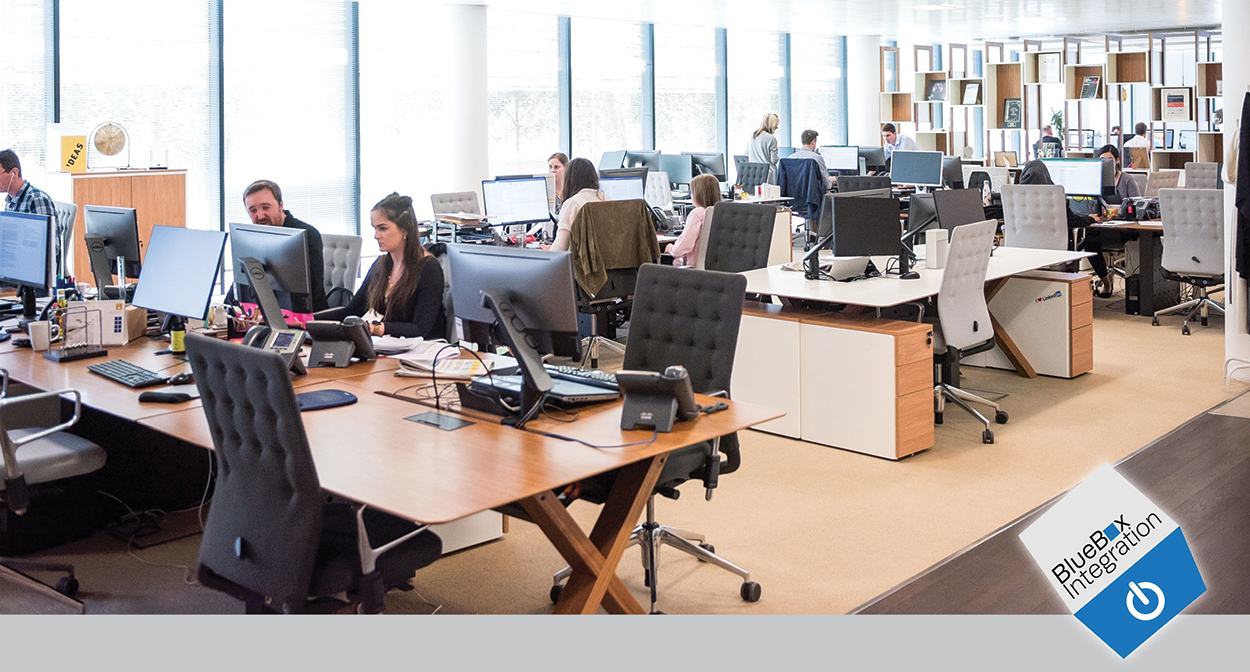Category: Productivity
If any of your staff work remotely, you need to be on top of this

I’ve worked from home for over 16 years. I started working from home as a writer for a well-known digital marketing company, after that, I worked remotely as the director of marketing strategy for a global software company that was headquartered on the other side of the planet. Then just under 6 years ago, I became the CEO of an international web development company with staff working from home, all over the globe. In fact, we don’t have an office anymore. We’re entirely remote-based.
I’ve learnt a number of things about working from home over the past decade, from managing a remote-based team of multi-lingual staff to keeping communication channels open with clients. There’s a lot to learn, a lot to do. Mistakes will be made, and emotions will rise and drop faster than the empires of old. That’s no different from running a traditional office-based company, except the challenges appear in different forms.
- Invest in a standing desk.
No, I’m not one of those people that tells everybody “I use a standing desk” – because I rarely use one myself. Many of my team members use one though. They help alleviate lower back and hip pain. Sitting for long periods of time can restrict blood-flow through the body and can lead to serious health problems as you get older, Arthritis being the number one.
- Take walking meetings when you can.
Got a meeting coming up, but don’t need to be in front of your PC screen? Grab your headset and take a walk. It’s great for your heart, your muscles and your general well-being. We have weekly walking meetings with different teams, it’s good to get out of the house, take a walk around the garden or up and down the street.
- Eat. Prepare Meals and Snacks.
I fall into the trap of not having enough time to make breakfast, which is silly – I work from home, 15 feet from the kitchen. I used to just snack on whatever I could find the grab in the cupboards or fridge, because I was busy and tunnel-vision takes over, all I saw is what was right in front of me, on my little screen, my little world. Now, I like to have some pre-cooked proteins in the fridge, something healthier to snack on – your brain needs energy to keep you going through the day.
It doesn’t have to be a substantial meal. I’m not suggesting you plate up roast dinners a week in advance. Keep fruit and chopped vegetables on hand.
- Select your tech with family in mind.
Most of the time (especially during lockdowns), working from home will mean rubbing shoulders with the rest of your family. Your kids have after-school activities, your significant other has things to do, you might even need to run some errands. I recommend choosing technologies that are available on multiple platforms and devices.
Cloud based phone systems enable you to take calls and meetings whilst also taking your kids to Karate. Office 365 gives you access to important documents and business schedules whilst your shopping around in Asda.
Maintain Regular Work/Office Hours
Working from home efficiently is a mental state more than anything. It’s about getting your mind into work-mode. The majority of experienced remote workers all have one thing in common, they have set work hours. Working from home doesn’t mean getting up at 11 am and taking a leisurely stroll around your local neighborhood. Setting and keeping regular working/office hours is key to maintaining a healthy work/life balance. It works both ways, your staff shouldn’t be turning up late, and you should also be encouraging them to stop working at a certain time, to help prevent burnout.
Keeping a Structured Workday
Structuring your staff’s workday helps to fill the gaps that would usually be filled by in-person, office conversations with supervisors or managers. Micromanaging gets much more difficult in a remote-working situation. Use productivity tools like Planner and Outlook Calendar (both available through Office 365, provided by BlueBox Integration) to structure the day for your workforce, encourage staff to plan their own days around peak performance times.
You’ll find that your staff reach their peak performance at different times of the day, nobody is the same. If you know their best focus comes in the morning, then you could suggest staff don’t spend too much time on emailing or other menial tasks until after lunch.
Dress for Work
Of course, it’s an enticing thought to sprawl across the sofa in your pyjamas with those French Bulldog slippers your wife got you last Christmas. But you wouldn’t do that at the office, it’s not the healthiest of work habits. The way you dress affects you psychologically. Try to follow your normal morning routine as if you’re about to jump in the car and join the rush hour traffic.
Taking the time to shower, brush your teeth and get your sunny-side-up breakfast can make you feel more confident. You don’t need to wear a full three-piece suit to wander around in your conservatory, but maintaining a casual-business dress sense will help get your mind in gear for working.
“I spend half an hour answering emails whilst my wife eats breakfast, then take a quick shower and dress to impress.” – Elon Musk, CEO Tesla, SpaceX.
Create a Designated Home Office Area
Consistency is an important element when it comes to working from home. Try to work from the same spot every day. Perhaps it’s a spare bedroom that you’ve transformed into a home office, a desk in the corner of your living room or even one of those luxury ‘sheds’ you’ve seen outside B&Q.
Make sure your workspace somewhat emulates your office workspace, again – it comes down to maintaining that working mentality. Working under a pile of documents with 3 of yesterday’s coffee cups sprawled across the table – not the best work habit.
3 Home Office Tips from Experienced Remote Workers:
“Keep a clean desk, have some plants around or a small pot of flowers on the desk..”
“I keep my area well lit, overhead lighting works best as it’s not glaring in your eyes..”
“I have a solid rule, my desk is for 3 things. Laptop, phone, mouse.”
Communication is Key
You’ve probably heard before that “Communication is Key”, it’s applicable across a variety of different activities. Chances are, you were taught how to communicate as a team back in primary school without even knowing it. Why were you forced to take part in Football? It’s to build teamwork and communication skills from an early age.
You should set up different communication options for your team, some companies like to have an internally accessible list of employee contact information, other companies (and our preferred method) is to use a tool like Microsoft Teams to allow seamless communication between your employees.
Video Conferencing
From meetings to social interactions – video conferencing can be an immensely valuable tool for keeping staff motivated, productive and socially engaged. Take the initiative to set up daily check-ins with certain teams, or schedule one on one chats with your staff. Even if it’s just to ask how their weekend was, it’s a great substitute for face-to-face communication and can boost the morale of your workforce.
Microsoft Teams (available through Office 365, provided by BlueBox Integration) has the ability to run video meetings, conferencing and one on one sessions without any additional stress or software downloads.
Avoiding Distractions
One of the hardest challenges to overcome when working from home is accountability. Without the presence of colleagues or managers, it’s easy to become distracted. There’s always odd-jobs to do around the house, errands to run – and of course, the PlayStation controller is ever-waiting for you. Do your best to put off household tasks like laundry and washing the dishes until you’re done with the workday, after you’ve “gone home” so to speak.
How to Effectively Manage Your (new) Remote Workforce

Common Challenges
Fortunately, working remotely isn’t a new thing. There are millions of people across various industries that have been managing to work from home successfully for years, from freelance web designers all the way to billionaire CEOs. That means we’re not starting from scratch, we have actionable data, tips, tricks and insights from remote-work veterans. One of the best ways to start is by looking at the most common challenges that newly remote staff face, and address the concerns of employers.
Managers, directors and employees often express concerns over the lack of face to face interaction. Supervisors worry that employees will take the opportunity to slack off or be otherwise inefficient and fail to produce optimal results (research proves that these stigmas have no factual basis for over 78% of home-based workers).
On the other hand, some employees (under 9%) feel that they lack managerial access and support. Some studies have shown that remote workers feel their out-of-reach managers aren’t in-touch with their actual needs and therefore aren’t equipped to offer the support their teams require.
Lack of accessible information is another common challenge your newly remote workforce can be faced with. Even getting answers to simple questions from colleagues can prove a difficult task. We find that having company-wide intranets or basic internal wiki pages can ease the vast majority of information-related issues. Text based instant messaging between your employees through an internal system like Microsoft Teams helps to alleviate wait times between emails for time-sensitive feedback and communication.
Then there’s the big “what if”, the unknown. Trust plays a large part of managing a remote team. When you think “remote work” or “work from home” you’re programmed to believe it’s unproductive. Why? For years, we’ve been bombarded with articles, tv shows and movies that depict it as an ‘easy’ alternative to ‘real work’, a way for slackers to get by. Then there’s all the photos of mothers laying on the sofa with one hand on their laptop and the other wrapped around their new-born baby. None of this could be further from the truth.
Virtual work isn’t easy, it’s not only for stay-at-home parents, and the vast majority of the world’s remote workforce simply aren’t sitting on the sofa perusing Facebook or reading Martha Stewarts latest fat-free cheesecake recipes. It’s hard work, that does of course come with the benefits of providing a great work/life balance. Once you’ve mastered the art of remote work, you’ll become a happier, more efficient and productive employee. You might even be able to find a couple of minutes to get some laundry done or fill the dishwasher.
Establish Daily Check-ins
The workplace daily check-in was largely popularized by North American fur traders in the late 1500’s. Originally used as a way to easily communicate when the remotely located Native Indian tribes had fur shipments ready to be collected for transport. It was effective then, and it’s equally as effective now. It’s not recommended to travel on horse-back to deliver handwritten scraps of paper of course, we’ve since modernised and become accustom to video calls and mobile phones.
Establishing daily check-ins with teams or individuals helps everybody get on the same page, where the team is up to and how the day’s tasks are laid out. Make sure to leave some time for a non-evasive personal note, ask somebody how their weekend was, if they’ve been watching a particular series on TV. You’ll be surprised how much your staff’s morale can be affected, and how the little things boost motivation.
Establish a Variety of Communication Options
We live in a connected world, with a society that thrives on social interaction. It’s true that not all humans get their social needs dealt with through the same ways. For example, some people won’t hesitate to pick up a phone and make a call to a friend or family member.
Not too far from those people, are those who crave face to face social connection – In cafes or going out on a Friday night for example. Then on the other end of the spectrum, there’s the stereotypical gamer, getting their social fill through talking to people they’ve never met, whilst digital bullets fly across sci-fi themed landscapes.
With all this in mind, huge, international companies have devised a wide range of different work-related communication options, instant messaging, emailing, video calling, cloud-based phone systems, the list goes on.
The most successful remote companies have implemented a multitude of different options for both their staff, and their clients. It’s good to tick a few boxes, and there’s a huge choice of technologies to help you achieve them.
- Internal Info Hub – Microsoft Teams, SharePoint, Facebook Workplace, Google Plus.
- Instant Messaging – Microsoft Teams, Slack, Facebook Messenger, Google Hangout.
- Video Calls & Conferencing – Microsoft Teams, Zoom, Google Duo.
- Cloud Phone System – BlueBox Hosted, PBX, 3CX, Panasonic, Spek.
Opportunity for Remote Social Interaction
In situations where you’re forced to work from home, it’s a good idea to stimulate social interaction between your staff and different teams. Different businesses do it in different ways, we’ll look at some of our personal favourites from small and large companies alike.
Lunch Dates
Encourage teams to organise video-based lunch dates, even if it’s just a brief get-together between 2 or 3 people. How does it work? It’s a really simple one – jump on a video call and have lunch like you were in the office kitchen area.
Poker Breaks
Although not such a popular ‘sport’ in the UK as it is in the US, Poker and other card games are highly effective at engaging people and provide much needed downtime and a solid social aspect. How can you play inter-team card games like Poker?
There’s plenty of options, you can try out an online browser-based card game that supports multiplayer like PokerStars, GGPoker or any of the multiplayer Miniclip games. You can also try video poker, where a member of the team acts as a dealer, with their camera facing top-down on the cards that are played on the table.
Pizza Party
One of the popular ideas from Google’s globally distributed remote teams is to have organized pizza parties. Usually taking place on a Friday, the employer or team leader will arrange for pizzas to be delivered at the same time to each of the staff, who will then open their pizzas during a video call – much like the lunch date option, but more rewarding since it’s a free pizza!















